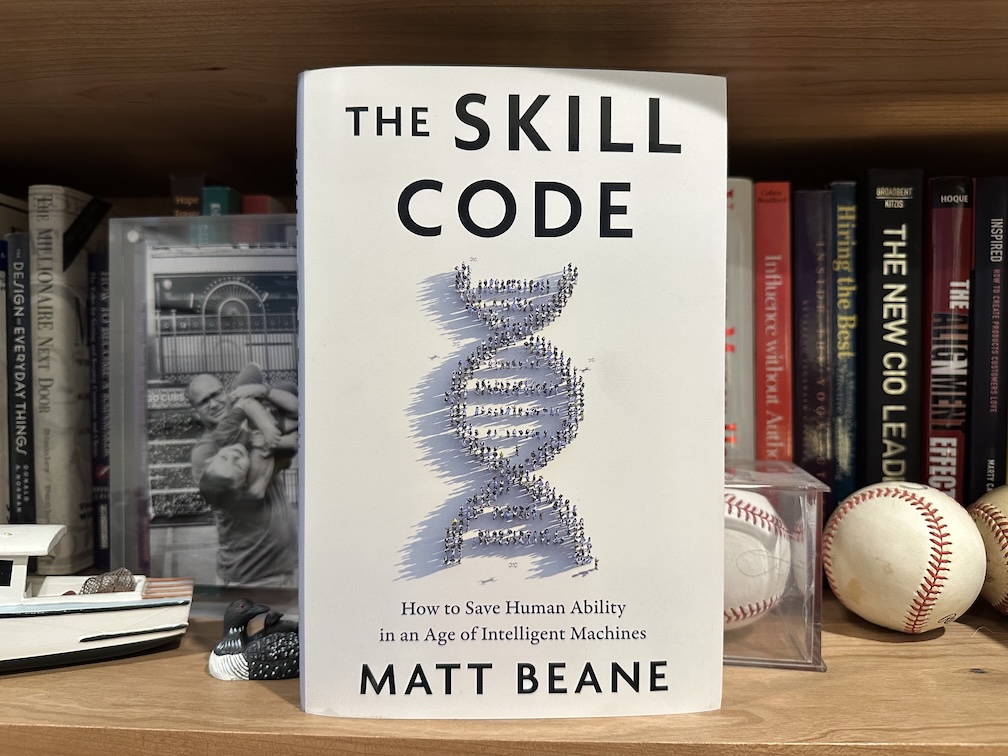
The Skill Code: Sacrificing Learning for Productivity
Matt Beane’s “The Skill Code” explores the unintended consequences of deploying intelligent technologies on skill development. As an assistant professor in the Technology Management department at the University of California, Beane argues that while these technologies increase expert productivity, they negatively impact the “skill code” - the fundamental process by which novices learn from experts. While Beane provides valuable insights into this issue, his solution overlooks the importance of addressing the root cause and redesigning processes during technology implementation.
Key Concepts
Beane introduces the concept of the “skill code,” which he describes as the DNA of how we learn most skills. Central to this idea is the working bond between experts and novices, which has been crucial for the transfer of skills throughout human history. Beane identifies three key components of this bond:
- Challenge: Novices learn best with healthy challenges supported by expert guidance.
- Complexity: A balance of complexity allows novices to understand the broader context of their work over time.
- Connection: Novices are motivated by feedback and recognition from experts they admire.
Author’s Arguments
Beane contends that by prioritizing expert productivity through intelligent technologies, we are disrupting these components of the skill code. He provides examples from various industries, such as chip design, where AI-driven algorithms optimize expert performance but marginalize junior engineers in the process. This shift, while beneficial in the short term, potentially undermines long-term skill development within organizations and professions.
To address this issue, Beane proposes focusing on “shadow learners” - individuals who bend or break rules to learn. He suggests a three-step approach: discover where shadow learning occurs, develop new rules for skill development based on these insights, and deploy these new practices.
Critique
While Beane’s analysis of the problem is compelling, and his proposed solution has merit, there are some limitations to his approach. Firstly, he does not adequately address the root cause of the issue - why organizations prioritize short-term productivity gains over long-term skill development. Understanding this could lead to more comprehensive solutions. Secondly, Beane’s focus on remedying existing situations overlooks the opportunity to prevent these issues during the implementation of new technologies. A more proactive approach would involve redesigning processes and roles when deploying intelligent technologies, ensuring that the expert-novice relationship and the three Cs of skill development are preserved from the outset.
Conclusion
“The Skill Code” offers valuable insights into the challenges facing skill development in the age of intelligent technologies. Beane’s concept of the skill code and his analysis of its disruption provide a useful framework for understanding this issue. While his proposed solution of leveraging shadow learners is promising, the book could benefit from a deeper exploration of preventative measures in process design during technology implementation. Despite these limitations, “The Skill Code” serves as an important call to action for organizations to carefully consider the long-term implications of their technology adoption strategies on skill development and knowledge transfer.